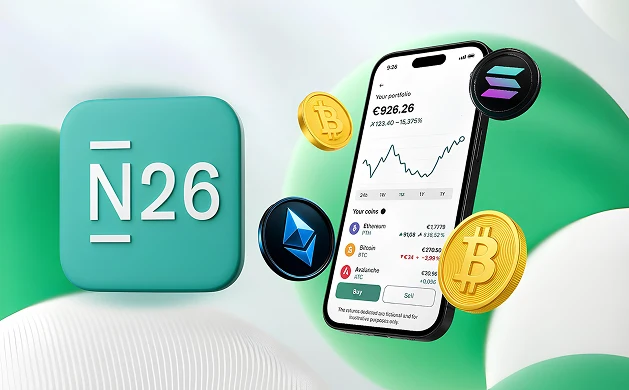Avalanche Subnets Explained
.webp)
Summary: Avalanche Subnets are customizable, independent networks of validators that scale the Avalanche ecosystem by offloading traffic from the primary network.
Each Subnet has its own execution environment, customizable validator requirements, and token economics, reducing competition for resources. Validators must stake 2000 AVAX to participate in Subnets, ensuring strong network security.
What is an Avalanche Subnet?
An Avalanche Subnet is a customizable network of validators that achieves consensus for one or more blockchains within the Avalanche ecosystem. Subnets operate independently from the main Avalanche network, with their own execution, ensuring they don’t compete for resources. Validators on a Subnet must first join the Primary Network, staking 2000 AVAX to participate.
Subnets address blockchain scalability by reducing traffic on the main network, allowing for faster transactions and lower gas fees. They offer extensive customization options, including control over validator requirements, token structures, and permission settings.
This flexibility makes Subnets ideal for decentralized applications, gaming, and DeFi platforms, enabling optimized performance and secure operations tailored to specific use cases.

How Many Subnets are Live?
Avalanche currently has 133 active Subnets, backed by 1,434 validators who have staked a total of 248,044,666 AVAX. These validators also support the core X, P, and C blockchains within the Primary Network.
There are 106 blockchains running on these Subnets, with the network handling over 1.82 billion transactions at a rate of 18.04 transactions per second. With 77,832 daily active addresses and 790,030 smart contracts deployed, Avalanche continues to grow and scale efficiently.

Avalanche Subnet Examples
Avalanche Subnets support various use cases thanks to their modular design and scalability. Here are some of the most popular live subnets:
DFK Chain
DFK Chain is built to support the popular play-to-earn game DeFi Kingdoms. It uses its own Avalanche Subnet to handle in-game transaction load efficiently. This design ensures smoother gameplay and quicker transaction times, enhancing the overall experience for players.
.webp)
Dexalot Subnet
Dexalot is a decentralized exchange on a dedicated Avalanche Subnet. It provides a trading environment that mimics centralized exchanges while maintaining the security and transparency of a DEX. The subnet’s custom setup eliminates slippage and custody risks for users.
.webp)
Shrapnel L1
Shrapnel, a AAA first-person shooter, utilizes an Avalanche Subnet to support its high-transaction gaming ecosystem. By operating on its own subnet, Shrapnel ensures fast, secure transactions tailored to its specific gaming needs, boosting performance & user experience.
.webp)
How to Create an Avalanche Subnet
Creating a Subnet on Avalanche offers flexibility and control over your own blockchain environment. With just a few steps, you can launch a custom network that meets your specific needs.
- Choose Validators: Select at least five validators to ensure reliable network performance. All validators must stake 2000 AVAX and be part of Avalanche's Primary Network.
- Select a Virtual Machine (VM): Pick the VM that best suits your needs. The Ethereum Virtual Machine (EVM) is common, but you can also use AvalancheVM or other specialized VMs.
- Set Custom Rules: Define the Subnet's consensus mechanism (Avalanche or Snowman), validator requirements, token fees, and permission settings (permissioned or permissionless).
- Deploy the Subnet: Use Avalanche’s development tools to launch your Subnet. Once live, it operates independently from the main network, offering enhanced scalability and performance.
Subnets vs Layer 2’s
Subnets and Layer 2 solutions scale their base blockchains, but follow different designs. Subnets operate as independent networks with their own validators and resources, offering more control and customization. Validators must stake 2000 AVAX, tying network security and performance directly to the Avalanche token, strengthening the overall ecosystem.
In contrast, Layer 2s like Optimism or Arbitrum on Ethereum depend on the Layer 1 chain for security and final consensus but don’t require staking ETH. While they reduce transaction costs and improve speed, L2s rely on the main network for validation, which can introduce delays and limits customization.
Subnets offer more autonomy and a unique staking model, whereas Layer 2s focus on scaling within an existing Layer 1 system without requiring native token staking.
Bottom Line
In short, Avalanche Subnets offer a scalable, customizable solution for blockchain projects by creating independent networks that ease congestion on the main chain.
With the ability to set custom rules and validators tied to staked AVAX, they provide flexibility and control for developers, especially in areas like DeFi, gaming, and decentralized apps.
%2520(1).webp)
Written by
Tony Kreng
Lead Editor
Tony Kreng, who holds an MBA in Business & Finance, brings over a decade of experience as a financial analyst. At Datawallet, he serves as the lead content editor and fact-checker, dedicated to maintaining the accuracy and trustworthiness of our insights.



.webp)
%20Philippines.webp)
%25201%2520(1).webp)



